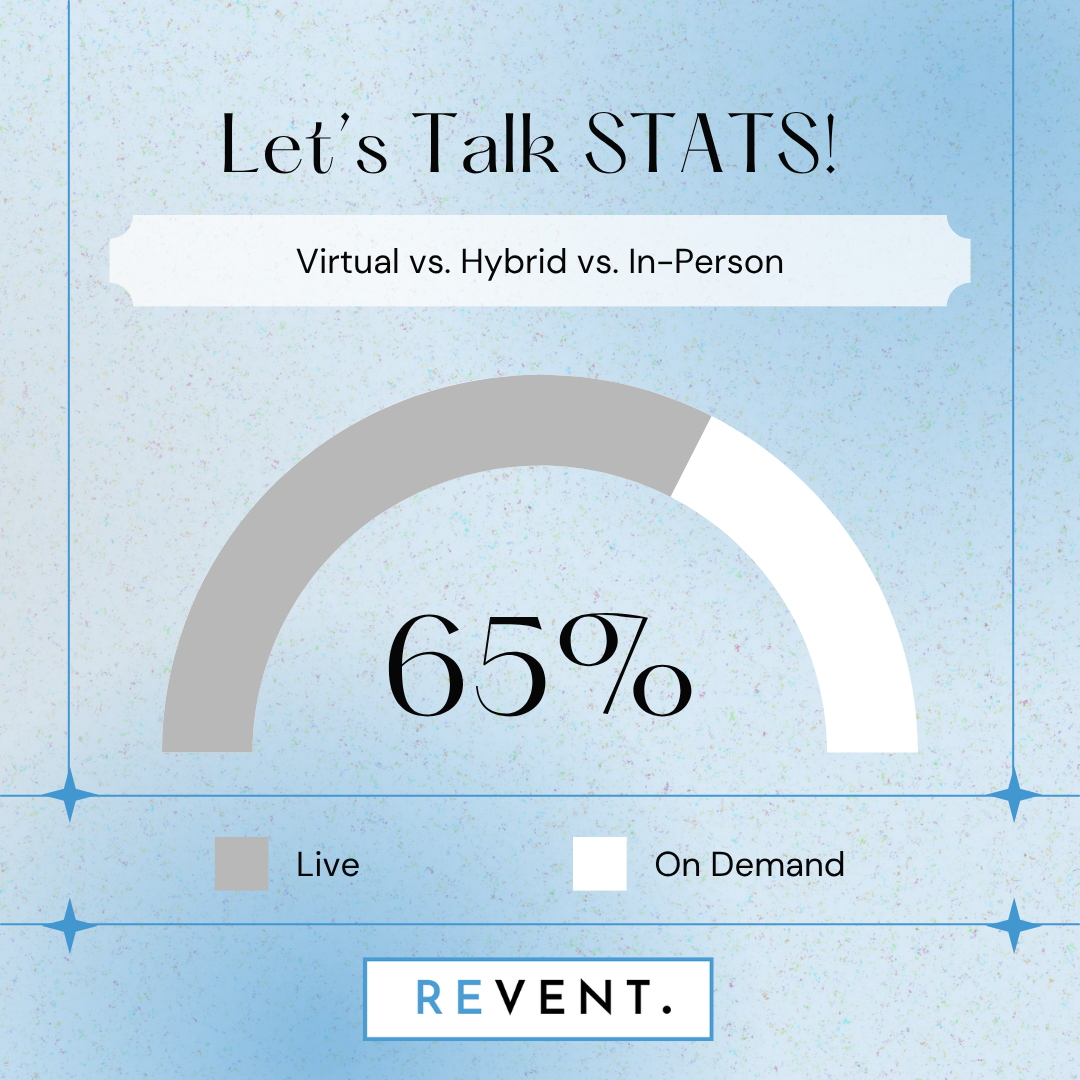All great event planners know that stats from past events and the wider industry are a powerful tool in decision making. From food selection, to when to launch registration, to the biggest question: should this event be virtual, hybrid or in person only?
Let’s break down the latest stats, look at the trends driving it, and figure out what they mean for planners trying to balance reach, engagement, and budget.
2025 Format Snapshot
Around 40% of all events in 2025 were virtual-only, a slight increase of 1% from 2024.
63% of organizers plan to increase investment in virtual events.
In practice, most events still skew in-person, but hybrids are the fastest-growing format.
Translation: the industry isn’t picking one format, they are choosing the right lane based on the audience, budget and subject.
Attendance Rates Trends
Virtual Events
· Roughly 50% of registrants actually attend live paid for events.
· Registration spikes closer to the event — about 55% sign up in the last week
In-Person Events
· Commitment is stronger: 8 in 10 attendees say they prefer in-person events.
· Attendance is rebounding: 57% of organizers report year-over-year growth for in-person turnout
· Convenience matters — if the event’s within an hour’s travel, 92% would rather attend in person.
Hybrid Events
· 67.8% of attendees prefer hybrid/in-person options vs. just 32.2% preferring fully virtual.
· But challenges are real: 71% of planners say connecting virtual and in-person audiences is their biggest headache (This is where our team can come in and take all that pain away!).
What Drives Attendance?
Convenience & Cost: Virtual/hybrid wins for accessibility. Travel and lodging costs are barriers for in-person.
Engagement & Fatigue: Attention spans are short. Interactive formats, gamification, and shorter sessions keep people from ghosting your virtual options.
Tech Reliability: Nothing kills attendance faster than a glitchy stream. Backup connectivity and solid AV are musts.
Event Budget: Virtual is very often the most budget friendly option, with hybrid being the most expensive.
Inclusivity: Hybrid/virtual opens the doors for people who couldn’t otherwise attend — whether due to distance, budget, or accessibility.
Takeaways for Event Planners
Hybrid: Great for reach, but requires double-the-effort engagement design and higher budgets.
Virtual: The easiest to plan and execute. Plan for ~50% attendance for paid and 30% for free unless you work hard to warm up registrants.
In-Person: Is still the most popular option when feasible. People still want to be there IRL.
On-Demand Content is a bonus: Extends your reach beyond the live room. Even if your event is in person only, record it to allow for on demand view (and also make’s great social content). Around 47% of registrants will go back and watch the on demand.
The Bottom Line
The future isn’t about choosing one format over another — it’s about blending them strategically. Virtual still drives reach, in-person builds commitment, and hybrid gives you the best of both worlds when done right.
And let’s be honest: no matter the format, if your content is boring, your audience will mysteriously “lose Wi-Fi” halfway through.
Contact the team at Revent team for a free 30 minutes consultation to decide what format will be best for you!
Sources:
“116 Event Statistics Shaping the Industry in 2025” — Cvent Cvent
“Virtual Events Statistics 2025” — 99Firms 99Firms.com
“Virtual event stats” — vFairs vFairs.com
“Virtual Events Statistics and Facts (2025)” — ElectroIQ Electro IQ
“Event Industry Statistics: Event Marketing, Virtual, Hybrid” — Remo Blog Remo
“Virtual Events Statistics - TrueList” — TrueList TrueList
“Events Industry Statistics: ZipDo” — ZipDo zipdo.co+1


